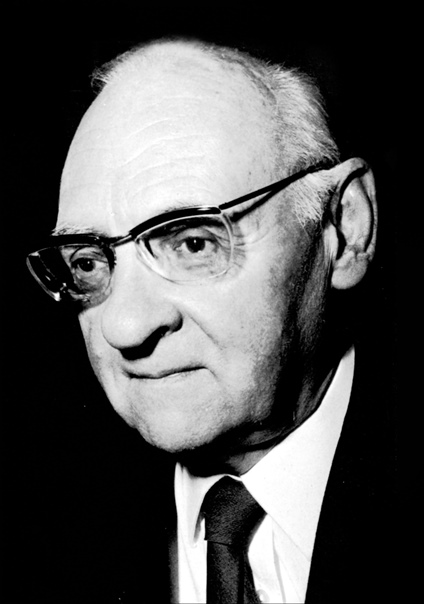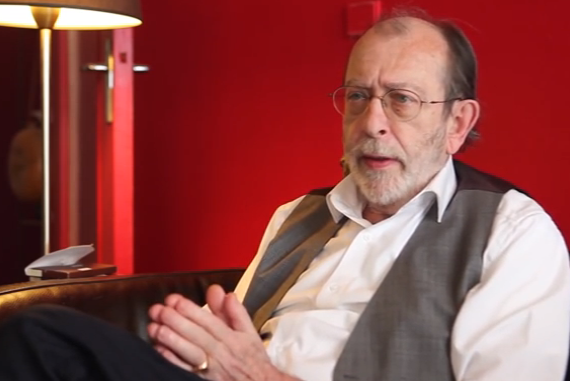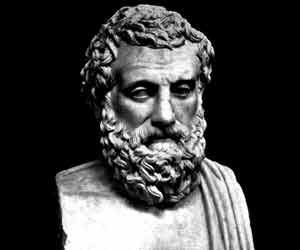Aesthetic subjectivism, or “relativism,” is the view that beauty is solely in the eye of the beholder. The term “relativism” is sometimes used to indicate that beauty is relative to each person with no objective standard by which to adjudicate assertions concerning beauty or its lack. This means that a person cannot be wrong unless he incorrectly describes his opinion. Statements about beauty might then be thought of as statements about feelings; the way something makes a person feel, rather than statements about the world.
Aesthetic subjectivism is closely related to moral subjectivism. Both deny the existence of moral and aesthetic realities; hence the notion that “everyone is entitled to his opinion.” Opinions being much in favor. Opinions thought of in this way have the handy feature of not requiring justifications or reasons and cannot be effectively challenged. If an assertion were to be queried, the reply can then be “well, that is my opinion.”
Subjectivism is coextensive with aesthetic and moral nihilism. Nihilism means that beauty and morality do not really exist. If nihilism were true, the statement “that is beautiful” would be neither true nor false, but meaningless. Aesthetic judgments would then be tantamount to a burp; something humans do of no particular significance with no implications other than that someone has swallowed some air. If that were true, perhaps aesthetic judgments would be something for which we should apologize. “Excuse me, I just had an experience of beauty. It must be something I ate.” In a similar fashion, “emotivism” promoted by the logical positivism reduces moral statements to simply to like or to dislike: “yum” or “yuck;” devoid of content.

Viktor Vasnetsov, Three Princesses of the Underworld (1884)
Aesthetic realism, however, is the notion that beauty exists objectively and can be perceived by all who have eyes to see, ears to hear and a heart to feel. Beauty can also be a property of invisible things such as the human soul. Aesthetic realism implies that aesthetic knowledge is likely to exist. People know that some things are clearly beautiful and some ugly. Like other qualities, such as being tall or short, rich or poor, some things are on the borderline.
Aesthetic realism entails that there is a hierarchy of beauty; just as there is a hierarchy of wealth, height and moral goodness. This hierarchy flies in the face of the modern preference for egalitarianism which prefers to imagine that people are equal in some nebulous fashion and that there is no accounting for taste. Egalitarianism is presented as though it were an ideal, but in fact it too is nihilistic. A universe that lacked moral goodness or beauty would by definition be an ugly, amoral hellhole. That is a steep price to pay for honoring mere “cannot be wrong” opinions.
Plato points out that everyone has the ability to contrast particular beautiful things with perfect beauty and, as we will see, one-day-old babies already demonstrate a preference for beautiful faces. This indicates that people are born with the ability to perceive and appreciate beauty. Since perfect beauty is never actually experienced on Earth, but people nonetheless use it as a standard by which to judge things, it seems knowledge of beauty is innate. For Plato, the human soul is eternal and has perceived the perfect form of beauty which exists in complete perfection in a timeless realm. Beautiful things on earth are reminders of perfect beauty, so aesthetic knowledge constitutes an anamnesis – a remembering.1
For most young people, the notion that beauty is objective is both unfamiliar and likely to provoke outrage. It offends a democratic, egalitarian sensibility. Nonetheless, beauty exists and is what it is regardless of what anyone thinks – as is the case with all objective reality. It exists whether it is perceived or not. Being able to perceive beauty could then be counted a great boon and a window on to an important aspect of reality. It would also mean that someone could make an aesthetic mistake, say regarding his choice of clothes or the décor of a room. It would mean an aesthetic education would make sense and a sense for the beautiful could be cultivated and encouraged.
Aesthetic Judgments are not Truths Concerning our Feelings

C. S. Lewis
C. S. Lewis comments that when someone says that a waterfall is sublime this is not a statement about his feelings.2 It is a statement about the waterfall. Someone is not saying that they, the perceiver, are sublime, or that his feelings are sublime. He is saying that the waterfall is sublime. If there is any associated feeling then the feeling would be one of veneration, not sublimity. Likewise, when a person finds something beautiful and communicates this perception, he is not saying how something makes him feel. He is describing the item. The associated feeling might be negative, such as feeling jealous at another’s beauty. Or it might be a feeling of appreciation. We do not mean that our feelings are beautiful.
So, aesthetic judgments are not statements about the way something makes us feel. Some philosophers have commented that the statement “this color seems red to me” can never be false provided the truth is being told. So long as the truth claim is restricted to what is purely subjective, being objectively wrong is beside the point. But saying something is beautiful is not like that. If someone said “that item seems beautiful to me” this would simply indicate that someone has reasons to doubt his perceptions for some reason. The fact that something objectively is or is not the case does not guarantee epistemic accuracy.
To appreciate beauty, it may be necessary that head and heart work in concert – though a cold, merely intellectual acknowledgement of objective comeliness is possible. In that case, one does not fully know it. Many philosophers have complained that it is clearly false when Plato writes “to know the good is to do the good.”3 Since Plato was no fool, a more charitable interpretation is required. Plato seems to be claiming that really to know something requires knowing something emotionally as well; to know something fully involves truly believing it. In that case, what is true of knowing beauty is true of knowing anything else. Other instances might be knowing that one’s child is dead, but not really believing it yet. Or knowing that the connection between money and happiness quickly diverges once a certain fairly limited amount of wealth is acquired, but still fantasizing about winning the lottery.
Every Culture and Natural Language Includes the Concept of Beauty
If beauty did not exist, then it would be pointless to talk, write, or think about it. Yet, every culture has the concept of beauty and a word for it. It would be very strange that every culture had developed a word for something nonexistent and which is a common conversational topic such as beautiful weather or sunsets.
If something were truly, irredeemably subjective and interior, then it would not be possible to have a word for it. Words are communal and exterior. They are something we take from outside ourselves and internalize. In fact, they are bound up with most thought and even serve to help constitute ourselves. The word that is our name has a talisman-like quality and becomes a part of a person’s identity.
There are objective standards of beauty, particularly human beauty, and the word can be learned simply from its use in sentences. “Look at the pretty lady,” or “that’s a pretty flower,” are perfectly intelligible and do not refer to interior states. The word “beauty” is not learned by asking someone to analyze a feeling, but by looking or by listening.

The natural beauty of the landscape: a mountain-range in the dusk.
Aesthetic Subjectivism is Empirically False; Beauty Preferences; Cross- and Inter-cultural Agreements
Beauty is not a cultural construct. One day old babies prefer and look longer at beautiful human faces than plain ones.4 Thus humans are born with an innate knowledge of and preference for the beautiful. Likewise, in one filmed experiment, children of perhaps three years of age were read a story. First by an average looking female teacher, then by a very good-looking one. The children universally and naively claimed that the story-telling abilities of the pretty teacher were superior, when the experimenters had gone out of their way to make sure the delivery was highly similar.
In an experiment by ABC News, women were shown pictures of short men next to tall men. There was nothing that the experimenters could do to get women to choose the short men including describing the short men as “a doctor, a best-selling author, a champion skier, a venture capitalist who’d made millions by the age of 25.”5
When the women were asked how the five foot man could be made irresistible, one woman said “Maybe the only thing you could say is that the other four are murderers.” Another agreed that a criminal record might count. Yet another said that it would be necessary to describe the taller men as child molesters to get her to prefer the short man. Children too described short men as being dumb, yucky and having no friends. The tall men were strong, handsome and smart.
In one experiment filmed using hidden cameras, two men were given identically high quality fictional résumés. One man was plain, the other model-handsome. The manager interviewing the handsome man started introducing him to his new work colleagues before getting very far through the interview. The manager claimed that the handsome man’s responses were superior to the plain man’s, but in fact, neither man said much at all. The same thing was found in an experiment by 20/20.6
Parents with beautiful children pay them more attention, they are more likely to put a seat belt on them and less likely to let them wander away out of sight when very young.7 There is widespread intracultural agreement about who is beautiful. Actors and actresses are well-known to tend to be well above average levels of attractiveness. An unattractive actor like Ernest Borgnine or Danny Devito can become infamous for bucking the trend. People who appear on television in all capacities, such as newsreaders or weather women, tend to be better than average looking.
There is a strong cross-cultural agreement too about who is more beautiful which is unrelated to the race of the viewer or the person being viewed, counting against the notion that beauty is a social construct or the notion that beauty is subjective.8 It is not a matter of individual preference and the idiosyncrasies of taste. A preference for blondes or brunettes does not mean a person is incapable of recognizing the beauty of someone with the less preferred hair color. While some cultures have what to others are strange preferences for neck-stretching or lip plates, even those cultures share the same preferences as others in the following regards:
(a) Facial symmetry
(b) Clear skin
(c) Square jaws in men (more masculine)
(d) High cheek bones in women (more feminine)
(e) A hip to waist ratio in women where the waist is 70% of the width of the hips.
With regard to waist and hips, it does not matter if a woman is Rubenesque (pretty heavy) or model thin, so long as that somewhat hour glass shape holds true. So some things that contribute to human beauty are even measurable.
A General Rule: Mates are Selected Among Similar Attractiveness
People tend to date someone of an attractiveness level similar to themselves, and of similar class, race, wealth, social circles and social status. And they are not deluded about how attractive their dates are.9 The assessment of attractiveness is unrelated to how attractive the assessor is or is not. People do not mistakenly think that the people they date are much better looking than they really are. They know exactly how good looking the other person is and they know how good looking they are. It is just a matter of being realistic. The less attractive someone is, the more heavily the person will weight qualities in other people unrelated to physical beauty, such as having a nice sense of humor.
An instinct for emotional self-preservation means that people are more likely to proposition someone who is likely to say yes. Being rejected and feeling broken-hearted can be horribly painful experiences. I know at least one person who exclusively has dated women wildly more attractive and younger than himself but that person is also demonstrably self-destructive and every such woman has ended up rejecting him. The fact that despite the twenty-year age difference, he selfishly refused to have children was probably also a factor.
I suspect that some odd preferences that people develop, such as a preference for skinny men, or women with prominent facial features (big noses), are also motivated by self-preservation. Just one girl in your high school class will be the prettiest. If every boy sets his sights on dating her, then every one of them but one are destined to be disappointed and dateless. Sometimes, the prettiest girl is not even asked to the prom, because no one wants to face rejection or risk feeling humiliated if she were to laugh in your face. One student jokingly said, “That’s my problem” when this topic came up. Wealth in men, but usually not in women, can also be a factor. So, as is well known, a gorgeous woman may marry a wealthy man. Most women refuse to “marry down,” meaning to marry someone much poorer than themselves, so the scenario of a rich woman marrying a poor handsome man will be rare.

The brutalist ugliness of Culkin Hall, State University of New York, Oswego.
Why Aesthetic Subjectivism? The Attempt to Avoid Making People Feel Bad
Aesthetic subjectivism is actively promoted in the United States, but in few other places, in the name of democracy and egalitarianism. It is a widespread ideal among many that everyone be considered equal. To that end the view is anti-hierarchy, a “leveling,” – there being considered to be no better and no worse. Beauty is thus thought to be whatever a person claims it to be. However, egalitarianism is false. Concerning just about any human characteristic, each individual will be better than some, worse than others. This includes looks, wealth, social status, various kinds of intelligence, various kinds of athletic ability, morality, musical ability, height and nearly any other feature. People should be considered equal before the law, but only as an ideal for which to strive. Aesthetic subjectivists believe that it is wrong to rank aesthetic perspectives, but in doing so, they rank not ranking as superior to ranking and thus they contradict themselves. The more anti-ranking the aesthetic relativist, the more the relativist is in favor of ranking – namely, ranking not ranking over ranking.
An aesthetic nihilist could argue that ranking aesthetic judgments is a meaningless exercise because beauty does not exist. If there is no beauty to rank then the topic can expire. Beauty judgments would then be equal only in the sense of being equally vacuous. Since actions speak louder than words, a test for aesthetic nihilism might be to see how the person reacts to the advances of an exceedingly gorgeous person, assuming he is single, or to offer the supposed nihilist the option of living in an extremely ugly building in an aesthetically horrible part of town. Or, if the person is reasonably wealthy, what sort of house and in what part of town the person has spontaneously chosen to live. Likewise, if the person is married or is seeing someone, if the person is of a similar level of attractiveness to them then this could contradict the claim of nihilism – although, since two people are involved, he may have found a non-nihilist who cares about looks who agreed to date him because he was of a similar level of attractiveness to her.
Teachers may promote aesthetic relativism for reasons of a false and goopy compassion along the lines of everyone getting a medal just for showing up. Nobody has any reason to cherish such false rewards and likewise few are in fact deluded about their looks. Aesthetic subjectivism is a lie designed to minimize hurt feelings; to “save the victim.” Though physical beauty is the least important kind of beauty, it still has an impact on people’s lives. In some cases, the objective reality of beauty and ugliness may be necessary to acknowledge in the interests of compassion. For instance, firefighters sometimes have their faces burnt off. Children will scream and cry upon looking at them. Adults might feel similarly but be too polite to express it. Those firefighters have to live with the consequences of their ugly disfigurement.10 It would hardly be consoling to tell them – “Never mind. Beauty is in the eye of the beholder.” In order to be compassionate to these men, who often feel suicidal and do in fact commit suicide, the reality of their situation must be acknowledged.
Trying to do away with the entire concept of meaningful beauty in order to avoid hurt feelings is a very drastic denial of an important reality. If it could be successful, beautiful architecture, music, art, literature and natural scenes would cease to exist. They could not even be pursued or appreciated. People would now be blind to something that makes worth living. Moral and cultural relativism have the same effect. Turning moral goodness into something entirely subjective and relative to the individual means what anybody else has to say on the topic can be of no interest. Again, it would be no more significant than a little belch after drinking something carbonated. While this may sound fantastical, in fact the moral compass of relativists and the appreciation of beauty and as importantly, the pursuit of beauty, has diminished among many people, including artists and architects many of whom consider beauty passé. Great psychic pain is the necessary result of not taking beauty and morality seriously. If the goal is to avoid hurting people, it has not succeeded and it departs from aesthetic and moral realities.
Eric Voegelin and the Second Reality

Eric Voegelin
Voegelin described the creation of what he termed “a second reality.”11 This refers to a fictional reality that is wholly imaginary. Second realities reflect ideologies and imagined utopias rather than the way things actually are. When in the grip of this ideology, this lie, then people may be tempted to ignore and deny the reality of their own experiences. Anything contradicting the second reality – namely real reality – will be suppressed. Imagining that beauty is wholly subjective and is whatever someone says it is, is just not true. The falsehood is encouraged in order to try make people nicer and more tolerant of other people. But lying is immoral and second realities create a cognitive dissonance within a person. That person is likely to get extremely defensive when his falsehood is challenged because the person already knows that what he is saying is a lie about which he is likely to be sensitive. The person is likely to lash out and scapegoat anyone who says the emperor has no clothes. Justice can only be served when the truth is told. False witnesses (liars) can gain the conviction of the innocent. Witch trials are based on the notion that witches exist. The truth is what will set the innocent free and save them from persecution. When truth is compromised, all is lost. Rationality, knowledge and being a good person rely on the pursuit of truth. Being truly moral implies adhering to the moral truth.
Instead of lying and saying facial beauty and ugliness do not exist, the truth that beauty is not evenly apportioned must be acknowledged. It is simply true that it will affect a person’s social experiences. But it can be emphasized that superficial physical beauty should not define someone’s worth as a person, which is also commonly acknowledged. It is moral and good to try to be as nice, kind and considerate to the less good looking as to the good looking. It is unnecessary to pretend that good looking people and less good looking people do not exist. In fact, to overcome our prejudice in favor of the aesthetically gifted among us, it is necessary to first admit that they exist. As further evidence of men and women’s awareness of and preference for the beautiful, in one ABC News experiment, a plain woman and a beautiful one wearing the same outfit were presented beside the road as though having run out of gasoline. Few people stopped for the plain one and even then often just offered advice about where to get gas. Cars came to a screeching halt for the beautiful women.12 Similar results were found when the two women sold things at a desk in a mall. The pretty woman sold 50% more.13
Biology: Beauty and Human Survival

Jonee Sierra, Miss Universe Rhodesia (1961)
If men were to no longer be interested in female beauty, the human race would cease to exist because procreation would stop. Attempts to stamp out “lookism” at Smith College – trying to treat reacting to beauty in people as though it were a sin along the lines of racism – is just a denial of reality. It may be a reality that we sometimes chafe at, but it is reality anyway. Evidence that aesthetic knowledge exists could be to see how many plain people imagine that they will earn a living as a model or apply for work at a modeling agency? How many plain people enter beauty contests and imagine they will win the main prize? Beauty contests can generate some confusion because all of the contestants are likely to be unusually good looking, exhibiting facial symmetry, clear skin, high cheek bones and a hip to waist ratio of 70%. In such circumstances, spoiled for choice, it is likely to be difficult to decide who is the very most beautiful.
I know of one young woman who was approached by a talent scout for a modeling agency while simply walking down the street makeup free. The woman was then taken back to the modeling agency where she was assessed, measured and then rejected. Her hips were one inch too wide, it was claimed. That seems like a slightly demonic scenario – an unsolicited compliment followed by an ego-challenging rejection. Two students asked “What if I think I’m a ‘ten’ and someone else thinks I’m a ‘five’?” This question was a counter-factual intended to demonstrate that there is no accounting for taste and no way to decide. The real answer is that self-delusion is always a human possibility. If beauty of all kinds is subjective, how many people imagine that they can write as beautifully as Shakespeare? Shakespeare is cross-culturally admired. If any student thinks he or she can write more beautifully than Shakespeare, I will check writing samples myself and enter the student for scholarships to Harvard, Oxford, etc., and for literary prizes. And if it checks out, walk with the person straight to Deborah Stanley’s office, the President of State University of New York in Oswego.
English and Fine Art Departments (were once) Devoted to Beauty
Departments of English originally existed because some writing is more beautiful and profound than others. Students were to study the great writers and try to improve their own writing, partly in imitation. Likewise, Fine Art departments ought to exist to promote greater skill in painting and sculpting and to nurture talent while cultivating an awareness and appreciation of beautiful art which will necessarily exist in the past – studying future art being a practical impossibility. Without the concept of beauty, and a love of the achievements of the past, such departments have no reason to exist. Since these elements are indeed frequently missing at this point in time, this may be a reason why majoring in English is becoming less popular. Unlike physical beauty, literary beauty is a little more abstract and involves an appreciation of form and structure. Professors are familiar with essays that might best be described as word vomit. Some kinds of beauty take training to appreciate – this could include literary beauty, or even more so, mathematical beauty. Mathematicians are fond of describing particularly good equations as “elegant;” an aesthetic category.
If the good, the true and the beautiful are three aspects of one thing, as Plato thought,14 then to give up on beauty is to give up on truth and goodness. Truth and goodness must be regarded as beautiful if we are to want them. Thus, the death of beauty means the death of education. If the insight literature provides is merely “information,” with no feeling of wonder or aesthetic component and were strictly utilitarian, then a person might as well read pamphlets in a doctor’s waiting room. There is something beautiful about wonder, and beauty should inspire wonder and interest. For Plato and Aristotle, philosophy begins with wonder. Jaded cynicism might be a human possibility but it is one better to be avoided as much as possible.
Beauty in Nature; God and Beauty
People are capable of appreciating beauty in nature too. It is common to find landscapes, forests, lakes and mountains to be beautiful. It seems likely that landscape painters have actually increased the appreciation of natural beauty. By seeing nature through the eyes of someone especially sensitive to its beauty, this can probably enhance our own experiences. Wishing to avoid hurt feelings is one reason that physical beauty, at least, has been diminished in importance. Another reason for the strained and difficult relationship the modern person has with beauty is the loss of the notion of the transcendent. When traveling through the German Rhine Valley small villages can be spied en route. Frequently, the most distinctive and eye-catching building is the local church. Similarly, in France, it is the cathedrals such as Metz Cathedral that are the most beautiful architecture. An anti-Christian may well think, “that money should have been spent on something useful.” Creating something of great beauty that all can admire is extremely useful. It is a beauty even atheists can appreciate. The money has created something of lasting value that is in fact valued.

Roger Scruton
As Roger Scruton says in “Why Beauty Matters”15 merely useful buildings are not useful at all because nobody wants to live or work in them, and certainly not to merely visit them. Beautiful buildings inspire our love and devotion and provide an enormous incentive for their maintenance. They make the world more lovable. We can point to them as a great human accomplishment. The strip mall is ugly. It is there to facilitate commerce. It is merely useful – parking spaces are plentiful and the land is cheap. But they provoke pain in the human soul. To visit them is to wish to conduct one’s business as quickly as possible in order to exit. It makes of one’s business a chore, offering no emotional refreshment.
Beautiful houses frequently employ features to be found in temples dedicated to the gods, such as columns. They are likely to have an upward emphasis. Beauty and sacredness go together. To see human life as sacred, for instance, it is necessary to think it beautiful. To perceive sacredness is to be filled with wonder and thrill to beauty. The banishment and diminishment of beauty goes hand in hand with desacralization and the loss of God or a sense of the transcendent. To imagine heaven is to imagine a beautiful place. An ugly heaven would be an oxymoron. That surely reinforces Scruton’s point that we feel at home in beauty and shun ugliness. Who would want to live in an ugly heaven? And how could one hate a beautiful one?
Scruton’s horror of metaphysics means he shies away from Plato’s conception of beauty as the divine shining through to our earthly home, but then he is happy to refer to beauty as part of a great mystery. He says “For Plato, the only explanation of such an experience [of beauty] was its transcendental origin. It speaks to us like the voice of God. And Kant too, in a much more sober way, thinks that the experience of beauty connects us with the ultimate mystery of being. Through beauty we are brought into the presence of the sacred.”16 Presumably the mystery of being and most especially the sacred have to do with transcendental realities. If the mystery were merely along the lines of “Now, isn’t that odd,” then it hardly has the awe-inspiring effect that Scruton wishes to indicate. The fact that the ever-increasing dearth of beauty coincides with the rise of secularism and atheism does not appear to be happenstance.
Have Students Been Taught to Cultivate and Appreciate Beauty?
By and large, students have not been taught to cultivate or appreciate beauty. Beauty has been derided as subjective and thus meaningless. If it is all in the eye of the beholder, then there is no point even discussing it. For the most part, beauty is absent from the curriculum. The implication is that the curriculum is rendered null and void. How can a student love something if it is not beautiful? If the findings of physics, the joy of music, wonder-based philosophy, the delight in languages, the great mysteries of geology or botany – if those things are not beautiful, why pursue them? If the pursuit is reduced to pragmatic realities, then there will be no real ardor or joy and the student will have to be metaphorically horse-whipped into action or simply grind out the bare minimum needed to pass or to do well depending on the ambitions of the student.

Hans Urs von Balthazar
Young people’s architectural surroundings are the ugliest that have ever existed on Earth. Commercial sectors of town are frequently cacophonous abominations of ugliness as is almost every other modernist monstrosity. Of the architectural beauty that can be found, most of it comes from an earlier time. The University of Canterbury in New Zealand where I did my undergraduate degree and my first master’s degree, changed locations to accommodate more students. The first location of the university included Neo-Gothic buildings; the new location, ugly brutalist (exposed concrete) horrors. My parents attended the Neo-Gothic campus; I and two of my sisters, the brutalist version. The Neo-Gothic original campus is not breathtakingly beautiful but it has a certain charm. The scale is modest and the white stone accents and decorations attractive. There are courtyards and stoa – covered walkways or porticos, some stained glass and delightful details. It is homey and pretty. It has been repurposed as an arts center and there was much concern regarding its preservation and repair after two major earthquakes in Christchurch that leveled large parts of the town.
Similarly, modern Americans tend to dress for comfort, not beauty. One tourist complained that his fellow Americans wandering around Paris looked like they were preparing to mow the lawn. This is the usual situation in most social settings. Egalitarianism becomes a pretext for slovenly disregard for appearance. Elderly women in New Zealand, as late as 1990, used to commonly dress neatly and primly. Perhaps a plaid woolen skirt, twin set and pearls, panty hose and sensible leather shoes. Perhaps a lace collar. In the United States, I was confronted in a social setting in the 1990s by an elderly woman dressed entirely in pink sweats and remember thinking “well, she certainly looks comfortable.”
Beauty exists. It is not only a ubiquitous human experience, it is a human need. Plotinus claims that we feel a kinship with beauty because it originates from our spiritual home. Roger Scruton comments that good painters transform the real in the light of the ideal, making the real beautiful and offering a consolation and remedy for the sorrows and hardships of life. People want to live and work in beautiful buildings, and beautiful music, art and literature redeem life and give it meaning. There are stories of children dying of cancer who actually console their grieving parents telling them not to feel so sad. Such children exhibit a maturity and grace and, most of all, a beautiful and admirable dignity. When the fictional father in “Life is Beautiful”17 tries to hide the horrible realities of a concentration camp both father and son occupy, the father underestimates the capacity of the human soul, and deprives his son of the opportunity of dying a dignified death.

Friedrich Wilhelm Nietzsche
Plato sees beauty as the path to virtue. It is necessary to see virtue as beautiful before pursuing it. That is the secret of many Platonic dialogs – Socrates’ moral beauty stands out in contrast with his morally repugnant interlocutors. Socrates is clearly being offered as a mimetic model and inspiration.18 Nietzsche’s perversity can be seen in his siding with the likes of Callicles and Polus.19 Hans Urs von Balthazar writes that without an appreciation of beauty both love and prayer would become impossible.20 Scruton comments that an ugly world is an unlovable world and comments that modern architecture is a crime against beauty. The rejection of beauty that many modern artists engage in leads to wallowing in the ugliness of things instead of redeeming them. This leads to a feeling of alienation. The ugly wears away at the soul. People are attracted to and warm to the beautiful. Beauty creates a home.
Conclusion
If morality exists, it is because moral realism is true. If morality were a social construct, it would be a fiction. It would be anything anybody said it was because it would be nothing at all. If beauty exists, then aesthetic realism is true. Beauty is truth, truth beauty, wrote Keats. Some aspects of beauty have a measurable component, but this is not what makes it objective. The truth is what is the case whether perceived or not; whether known or not. Truth and reality are not a democracy that we vote on. Reality is what it is, no matter what anyone thinks about it.
Beauty and mathematical truths exist regardless of whether they are perceived or not. Beautiful things like music exist as something being played now, or in memory or in someone’s imagination. It exists as potential. It exists as part of the Akashic record – a compendium of all thoughts, feelings and experiences that exists outside time. If beauty exists as a Form, then beauty is timeless and eternal. Math is true whether anyone ever did any mathematics or not. A sunset is beautiful whether perceived or not. Human existence is a boon to the universe because an appreciated beauty is better than an unappreciated one.

Plato
Plotinus via Plato identifies four levels of existence; physical, psyche/mind, nous/soul, The One/The Form of the Good. Beauty, truth, justice and mathematics exist at the level of soul.21 The human mind tries to approximate these realities. Goedel’s Theorem proves that this approximation will always fall short of the full reality, while implicitly drawing on these transcendental truths in the form of the axiom not provable within the axiomatic system.22 The P in A + P; “A” being the axiomatic system and “P” being the unprovable axiom on which the system depends.
An aesthetic education is about trying to match the level of mind and psyche, to the truly beautiful existing at the level of nous. Aesthetic maturity would include greater subtlety and nuance in aesthetic appreciation. Truth and goodness are both beautiful and the beautiful, true and good. Justice exists. Punching someone in the face after that person has spent all day, perhaps hot and sweaty, helping the puncher move is unfair. No reasonable person has any doubt about it. Where does justice exist? It exists beyond the physical realm. It can be perceived with heart and mind – as an intuition we know to be true without fully being able to explain how we know it. Plato suggested it was a remembering – anamnesis.
Beauty exists. It exists as a Form shining through Earthly affairs offering a glimpse of the divine. We find ourselves attracted to it and we feel a kinship to it – it can make of a place, a home. Beauty of soul far outshines beauty of bodily form. Roger Scruton was incorrect when he says in “Why Beauty Matters” that Plato thought the human face and form the most beautiful thing. In fact, Plato thought that a morally good soul was far more important and more beautiful. Socrates was famously physically ugly. In the Symposium, Plato imagines opening up Socrates to find little gods inside.23
There is not much someone can do about her own physical beauty. She can lose weight, cut her hair, shower and dress nicely but that has definite limits. Beauty of soul is much more important and in principle, entirely within someone’s control. Beauty of body is a happenstance and to a large extent, an accident. It can seem unfair that some people are much better looking than others. The difference can come down to mere millimeters on a face. But once it is understood that interior beauty is the secret of life, any resentment physical beauty generates can be set aside and just appreciated as the light of eternity and the divine shining through.
 – Adj. Prof. Richard Cocks teaches philosophy at SUNY Oswego. Originally from Christchurch, New Zealand, he is presently based in the United States. Dr. Cocks is an editor and regular contributor at the Orthosphere and has been published at The Brussels Journal, People of Shambhala, The John William Pope Center for Higher Educational Policy and the University Bookman.
– Adj. Prof. Richard Cocks teaches philosophy at SUNY Oswego. Originally from Christchurch, New Zealand, he is presently based in the United States. Dr. Cocks is an editor and regular contributor at the Orthosphere and has been published at The Brussels Journal, People of Shambhala, The John William Pope Center for Higher Educational Policy and the University Bookman.
Endnotes:
- Anamnesis (ἀνάμνησις) means recollection, but it is particularly associated with Plato and his notion that we remember things from our past lives – specifically, that though we have forgotten Platonic Forms in the process of being reborn, passing through the River of Lethe, meaning “forgetfulness”, we can still be reminded of the Forms we once knew by our experiences on Earth. He most famously develops the notion in the Meno in the example of the slave boy who can be shown to remember mathematics though having no formal education in the subject.
- C. S. Lewis, The Abolition of Man (Harper Collins, 2001).
- “Virtue is knowledge” (Meno 87c).
- Anna Gosline, “Babies Prefer to Gaze Upon Beautiful Faces” New Scientist (6 September 2004) <newscientist.com> (accessed 31 September 2017).
- John Stossel et al., “The Ugly Truth About Beauty” ABC News (online) (32 August, year not provided) <abcnews.go.com> (accessed 30 September 2017).
- Ibid.
- Nicholas Bakalar, “Ugly Children May Get Parental Short Shrift” The New York Times (online) (3 May 2005) <nytimes.com> (accessed 30 September 2017).
- Gad Saad, “Beauty: Culture-Specific or Universally Defined?” Psychology Today (online) (6 April 2010) <psychologytoday.com> (accessed 30 September 2017).
- John M. Grohol, “Does Our Own Attractiveness Affect Our Dating Preferences?” Psych Central (blog) (2008) <psychcentral.com> (accessed 30 September 2017). See also: L. Lee, G. Loewenstein, D. Ariely, J. Hong, and J. Young, “If I’m not hot, are you hot or not? Physical-attractiveness evaluations and dating preferences as a function of one’s own attractiveness” Psychological Science (2008) Vol. 19 No. 7 pp. 669-677.
- Jeff Nelson, “How the First Extensive Face Transplant Helped a Burn Victim Reclaim His Life ‘Now I’m Just a Normal Guy – There’s No Staring’” People (online) (21 November 2016 @ 11:42AM EDT) <people.com> (accessed 30 September 2017).
- Second reality is a term that appears in “Hitler and the Germans” when Voegelin writes about Don Quixote.
- John Stossel et al., op. cit.
- Ibid.
- Plato, Symposium §§ 201, 212.
- “Why Beauty Matters” (Director: Louise Lockwood; Writer: Roger Scruton; Released: BBC2, 28 November 2009). See also: Roger Scruton, Beauty (Oxford University Press, 2009) and Roger Scruton’s address to The Wheatley Institution: “The True, The Good and the Beautiful” (6 April 2017).
- Roger Scruton, “Why Beauty Matters” op. cit.
- “Life is Beautiful” (Director: Roberto Benigni; Writer: Roberto Bnigni and Vincenzo Cerami; Released: Miramax, 20 December 1997).
- In the Symposium, Socrates is described as having little gods inside him if he were to be opened up and of admirable self-restraint. In the Gorgias, Socrates debates with Gorgias, Polus and Callicles in that order. Each one is shown to be more repulsive than the next, making Socrates’ position advocating living a moral life look increasingly attractive; the others’ cravenly self-serving philosophy and disregard for morality and the pain and suffering inflicted on others in the process, repulsive. That Plato intended Socrates to be an admirable figure worthy of emulation is not doubted by most knowledgeable readers.
- In The Genealogy of Morals, Nietzsche simply steals Plato’s character Callicles’ notion that the law is made by the weak to protect themselves from the strong and not because of any interest in justice.
- Hans Urs von Balthazar, Seeing the Form: The Glory of the Lord, A Theological Aesthetics Erasmo Leiva-Merikakis (trans.) John Riches (ed.) (T&T Clark, 1998 [1982]) [Herrlichkeit: Enine Theologische Äesthetik, I: Schau der Gestalt (Johannes Verlag, 1961)].
- This notion can be found in Book VII of The Republic in the famous Allegory of the Cave. Plotinus uses the names of psyche, nous, and The One to refer to the four levels of the Cave throughout the Enneads.
- Panu Raatikainen, “Gödel’s Incompleteness Theorems” Edward N. Zalta (ed.) The Stanford Encyclopedia of Philosophy (Spring 2015) <plato.stanford.edu> (accessed 15 October 2017).
- Alcibiades says this in the Symposium: “What [Socrates] reminds me of more than anything is one of those little sileni that you see on the statuaries’ stalls; you know the ones I mean – they’re modeled with pipes or flutes in their hands, and when you open them down the middle there are little figures of the gods inside.” (§ 215)





Leave a comment